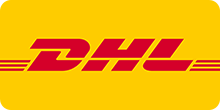Locating and recovering your stratosphere probe
After launching your weather balloon, you have successfully mastered an important part of your mission. The second challenge which separates you from your Stratosphere recordings is tracking and recovery of the probe.
Drive to the predicted landing site: We recommend that you head directly towards the predicted landing site immediately after launching the weather balloon. Ideally, you performed the flight route prediction a few hours before the launch, so that the most current weather data is factored into the calculation, resulting in a precise forecast of the landing location. Once the launch is completed, drive with your team to the nearest town close to the projected landing site and wait there for the exact position data transmitted by the GPS trackers.
Using both the GPS tracker STRATOfinder and the SPOT GPS tracker offers the advantage that the SPOT tracker transmits its position approximately every 5 minutes during the stratospheric flight. This allows you to compare the actual flight route with the predicted route and draw conclusions about the accuracy of your prediction. It enables ongoing verification of the flight path and contributes to the safety and precision of your mission until you receive the exact landing position from the GPS tracker STRATOfinder.
Assemble emergency equipment for the recovery: Depending on the location, auxiliary materials such as duct tape, ropes, wires and tools may be useful. Depending on the place of departure, the probability of landing on a field is greatest within Germany, but more than 30% of the German area is covered with forests. Thus, a landing in a tree must be prepared for.
Basically, there are no perfect instructions in case the probe lands in the tree, in the field or on a private property. Our following suggestions are only recommendations, basically a little creativity is required especially for landings in trees. So we present below a few landing and solution proposals and give recommendations for the most important recovery equipment.
The most important equipment for relocation:
- Duct tape
- Zipties
- Ropes & cords
- Flashlights
- general tools.
In addition, you should pack enough water and food, in case you will need to go on a longer trip to recover your probe.
» POSSIBLE LANDING SITES – A SHORT SUMMARY «

Tree
Only very few households have telescopic ladders or telescopic poles. Although this would be the ideal equipment for a tree landing, but also long, surrounding branches can be connected to each other with duct tape to “fish” for the probe. Here we recommend attaching a hook made of wire at the tip of the “fishing rod” to hook the probe. Possibly you can also build something from strings and grappling hooks to throw the string over the probe and pull it down so. Especially in school projects, the volunteer fire department or the foresters are usually available for the recovery. If all this does not work, the last option is the help of a tree climber conceivable. Here a Google search for “tree climber” or “Arborist”, which can retrieve every rpobe from even the highest treetops.

Field
If you land on a field that has not yet been harvested, as few of you as possible should go to the exact landing spot through the tracks, so that no plants of the farmer are damaged.

Private property
If you land on a private property, you should ask for permission before entering. So far, we have only had good experiences in this scenario, as we have always talked about our project before and the owners themselves are very curious about the recordings. Thus, each of our landings was actively supported.

Sea/ River/ Lake
Basically, your probe is made of Styrofoam and polystyrene, which floats. The probability of landing in the water is very low. Should you launch directly at the sea, you can minimize a water landing by using our flight route pre-calculation before the scheduled start date and shifting the start by one day with the probe flying inland. However, if the probe lands on open water, the probe can be retrieved using a boat. We have experienced only a single landing on hundreds of flights and have successfully completed this with a rented boat. That too can be an exciting part of the adventure.

High-voltage power line
Since 2011, we have been launching missions to the edge of space and have carried out almost 1000 of our own flights in the most densely populated regions of the world! We have only landed once in a high-voltage power line in Germany with our probe and parachute. The probe and parachute were suspended at the highest level of the 380,000 volt line at a height of around 60 meters. At first you think: Ok, that’s it, that’s trouble! From our own experience we can say: No! It’s not, everything is fine. First of all, it should be clear, even if it is only a small power line: Please do not try to recover the probe yourself, there is a risk of electric shock and therefore a risk to life! If the probe gets stuck in a power line, simply drive to the nearest power pole. There you will find the name of the pylon and line as well as the contact details of the network operator! Call them directly and describe the situation. The staff thanked us several times for contacting them directly. According to the information provided, dozens of things get stuck in power lines every day and it is the most normal thing in the world for the operator. Within a day, a helicopter rescue was arranged to maintain the power lines and remove any objects that got stuck. Our probe and parachute were recovered by the professional helicopter crew without any problems. No costs were incurred due to the direct communication. Should any costs be incurred, in our case it would have been EUR 15,000, the aircraft owner’s liability insurance takes effect in this case and covers such incidents in full. This insurance is there precisely for such cases! Conclusion: A landing like this is really special and extremely rare: 1: 1000 in our case, but no problem as long as the landing is reported directly to the operator.






 Deutsch
Deutsch  Français
Français  Español
Español 

























